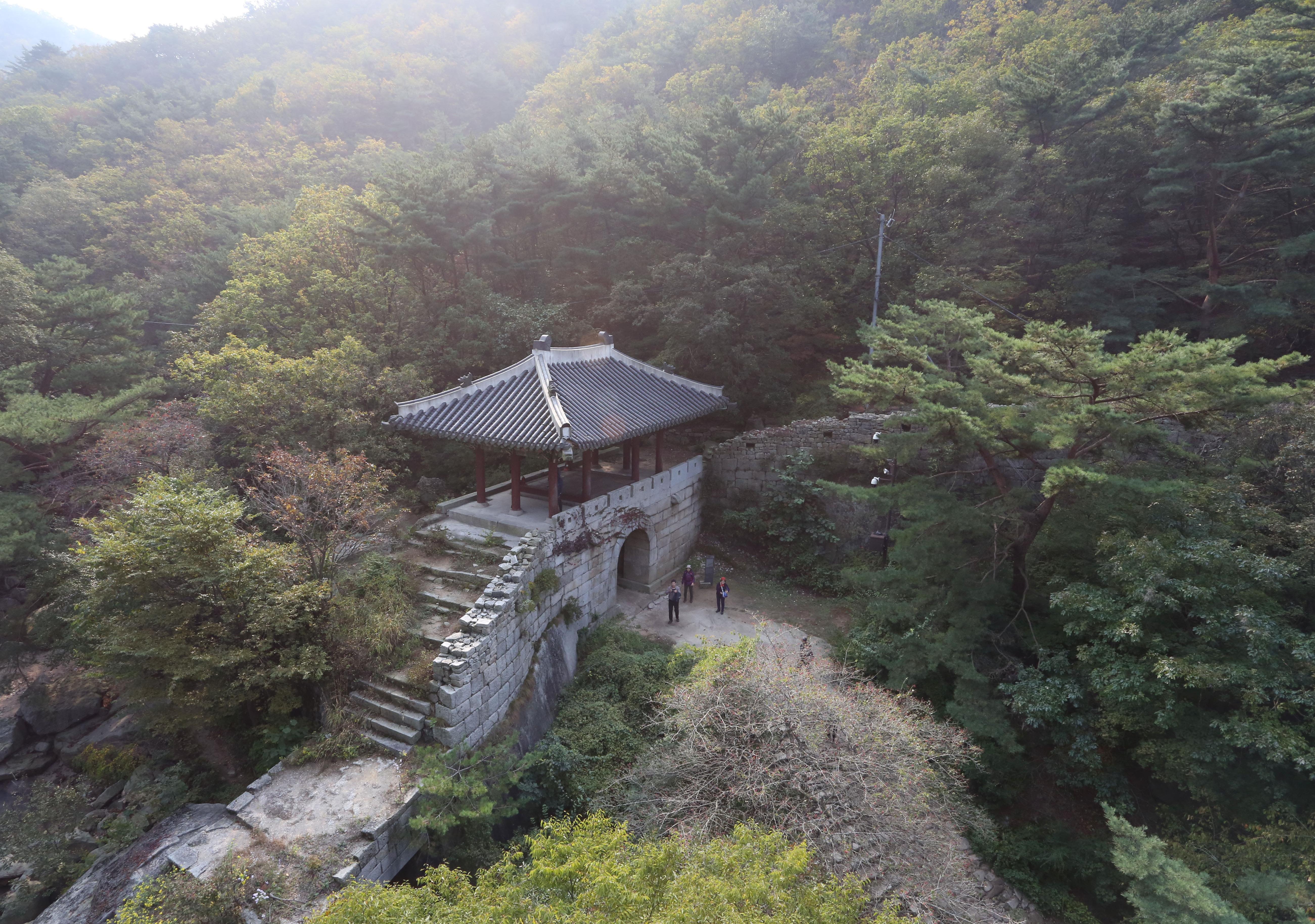
2 minute read
Past of Bukhansanseong Fortress
Bukhansanseong Fortress in winter(Daeseomun Gate)
Introduction of Bukhansanseong Fortress
Advertisement
Bukhansanseong Fortress(北漢山城), Designated Heritage No.: 162, Designated date: 1968. 12. 05 Designated area: 494,516㎡ Location: San 1-1 Bukhan-dong, Deokyang-gu, Goyang-si, Gyeonggi-do
Bukhansanseong Fortress is stone-walled fortress that was constructed by connecting various peaks of Bukhansan Mountain. Its length is 11.6km, including natural wall, and inner area is 5.3㎢. Debates over necessity of defending the capital by constructing fortress wall began in early Joseon Dynasty. However, actual construction had not begun until 100 years after Japanese invasion of Korea in 1592 and, Manchu invasion of Korea in 1636. In 1711 (37th years of King Suk-Jong), unlike the debate, the construction of fortress only took six months. Fast construction was possible due to higher level of construction technology and system. 6 main gates, 8 auxiliary gates, and 2 water gates were built along the fortress wall and 143 barracks were built to station soldiers, which enhanced the defensive utility
Capital Protection
Bukhansanseong Fortress wall (Buwangdong Sector)
Wall height of Bukhansanseong Fortress was differed by flat terrain, peak and mountainous region in order to harmonize with the nature. Standard wall height was implemented in the valley area, but in stiff terrain, lower height wall was built. any walls were not built around peak area, instead, natural wall was utilized and total length of natural wall was 4.3km. Unique characteristics of Bukhansanseong Fortress compare to other fortresses in Korea are; various wall heights depended on terrains, battlement made of one stone, omission of outworks (Ongseong) and bastions, and dual wall construction.




01 02
03
01 Jungseongmun Gate
April, 1712 (38th years of King SukJong), King SukJong visited the Bukhansanseong Fortress. He was concerned about enemy invasion through the lowest terrain in Western part of Bukhansanseong Fortress and ordered construction of inner wall to protect the vulnerable area. Construction of Inner wall was completed in 1714 (40th years of King Suk-Jong).
02 Bukmun Gate
Bukmun (North gate) forfeited its function as main gate in 18th century and heavy rain in 1988 destroyed the gate and near wall. The restoration process of the gate was started in 1993. Although gate’s pavilion was not restored, 5 open-sided foundation stones remained.
03 Fortress wall between
Daeseomun and Watergate
Fortress wall between Daeseomun and Watergate was built depending on the angle of the fortress wall terrain. Rectangular shaped stones were stacked meticulously and vertically with slightly inclined angle.

